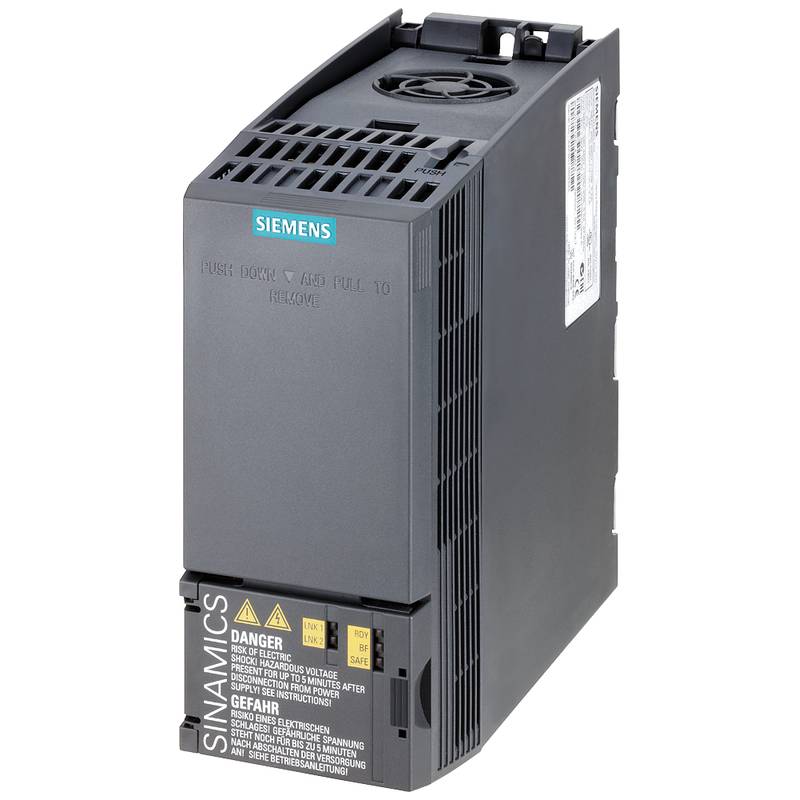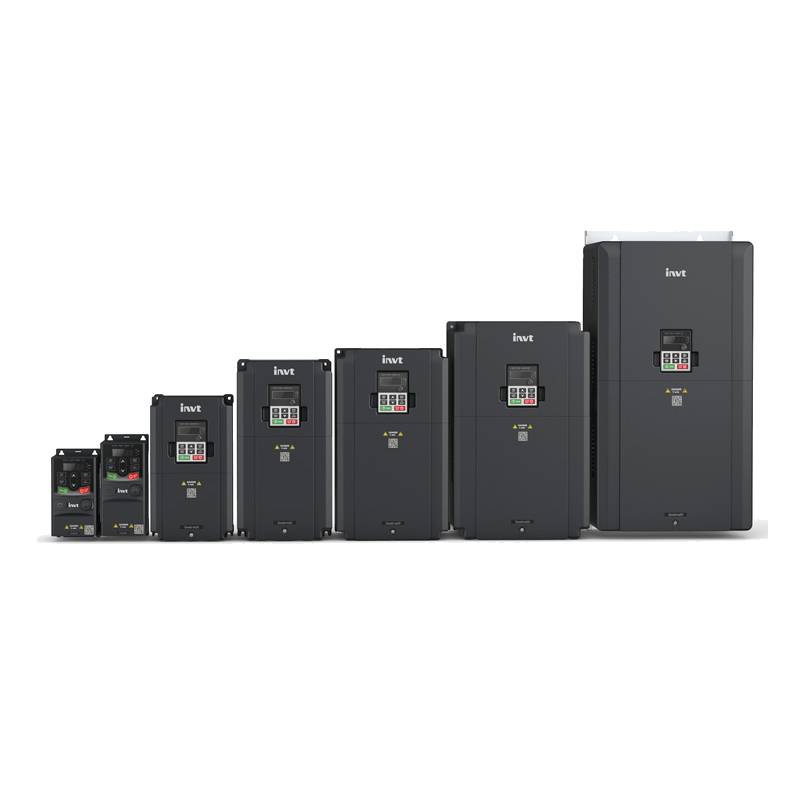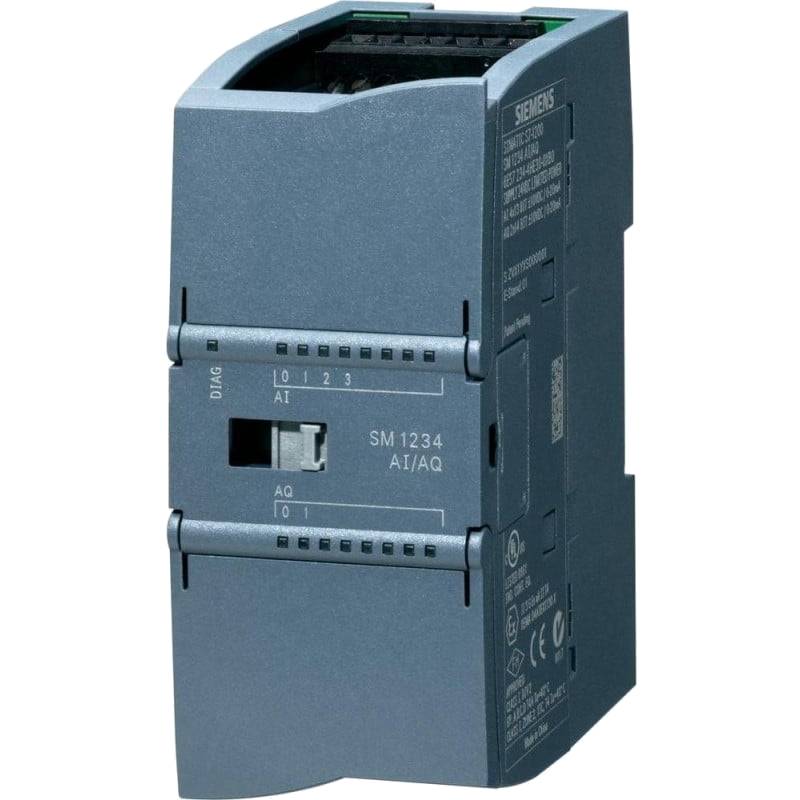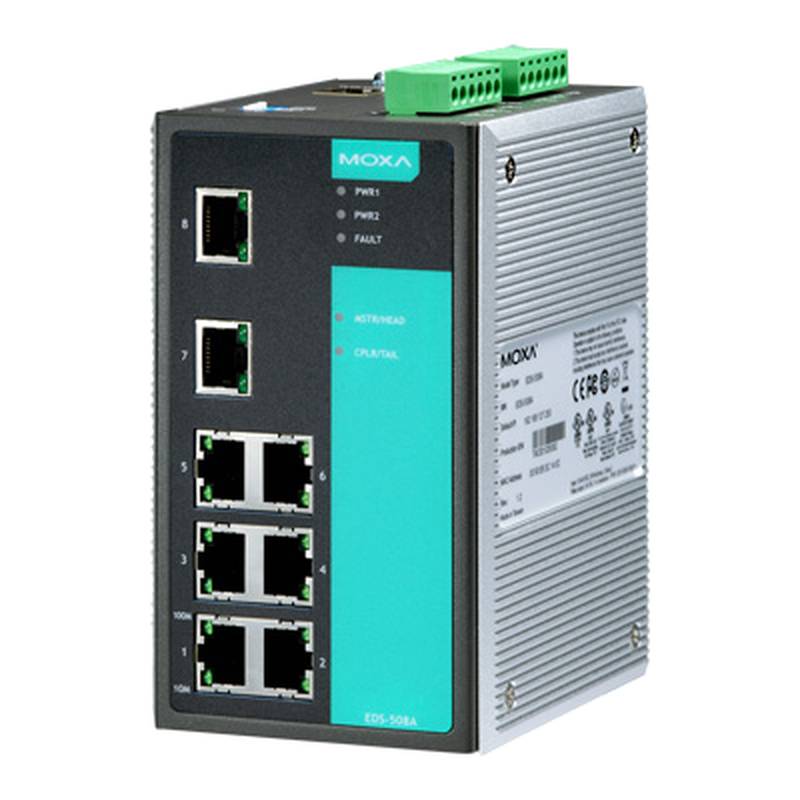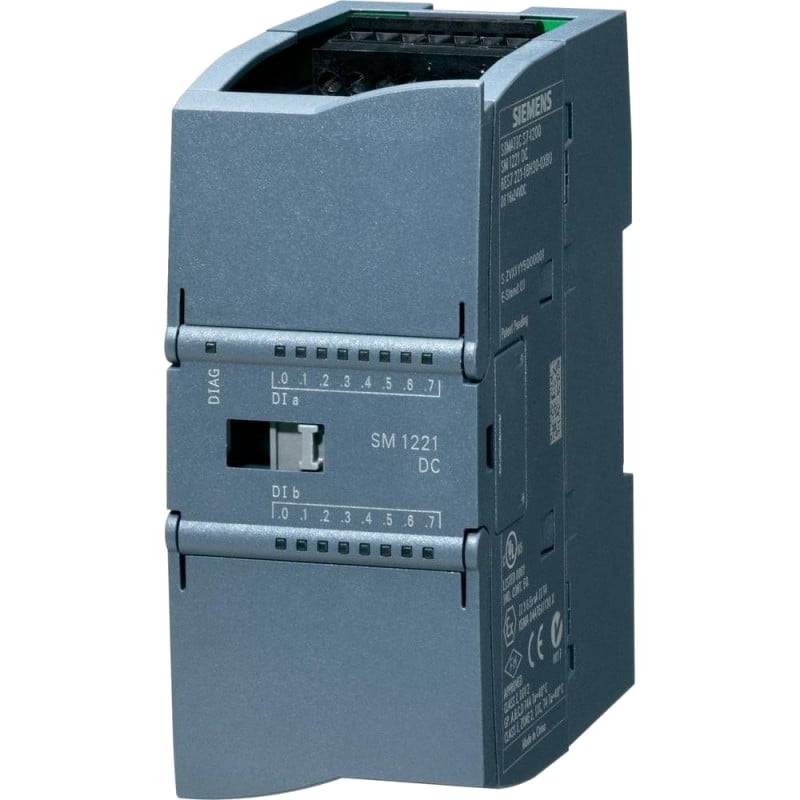
The SIMPHOENIX DX100-4T0040B Advanced VFD Frequency Converter 4kW stands as a robust solution for precise motor control in demanding industrial environments. This advanced Variable Frequency Drive (VFD) boasts exceptional performance, energy efficiency, and a suite of intelligent features designed to optimize operational output and minimize downtime. Its core strengths lie in its sophisticated control algorithms, versatile application support, and user-friendly interface, making it a prime choice for applications requiring dynamic speed adjustment and reliable power management.
SIMPHOENIX DX100-4T0040B Product Specifications
| Parameter | Specification |
| :--------------------- | :----------------------------- |
| Model | DX100-4T0040B |
| Power Rating | 4kW |
| Input Voltage | 3-Phase, 380-460V AC |
| Output Voltage | 3-Phase, 380-460V AC |
| Output Frequency | 0-400 Hz |
| Control Method | V/f Control, Vector Control |
| Overload Capacity | 150% for 60 seconds |
| Protection Features | Overcurrent, Overvoltage, Undervoltage, Overheat, Phase Loss, etc. |
| Communication Options | RS485 (Modbus) |
| Dimensions (approx.) | Varies by enclosure type |
| Operating Temperature | -10°C to +40°C |
Core Features & Market Positioning
The SIMPHOENIX DX100-4T0040B distinguishes itself through its advanced sensorless vector control, enabling high torque output even at low speeds, a critical advantage for machinery with heavy starting loads. This VFD incorporates intelligent PID control, facilitating precise temperature, pressure, or flow regulation without external controllers, thereby simplifying system design and reducing component costs. Its robust design, including enhanced thermal management and comprehensive protection functions, ensures operational reliability and longevity, positioning it as a dependable and cost-effective solution for a wide array of industrial automation tasks. The integrated Modbus communication protocol (RS485) offers seamless integration into existing SCADA and PLC systems, enhancing its appeal for networked industrial environments.
Key Application Scenarios
This 4kW frequency converter is exceptionally well-suited for a diverse range of applications where precise motor speed and torque control are paramount. It finds extensive use in pump and fan control, optimizing energy consumption by matching motor speed to system demand, thereby reducing operational costs and wear on equipment. In the conveyor systems and material handling, the DX100-4T0040B ensures smooth acceleration and deceleration, preventing product damage and improving throughput. Its ability to maintain stable torque at low speeds makes it ideal for machine tools, CNC machines, and textile machinery, where accurate positional control and consistent performance are essential. Furthermore, it is a strong contender for HVAC systems, extruders, and general industrial machinery requiring variable speed capabilities for enhanced efficiency and process control.
Practical System Integration Guidance
Integrating the SIMPHOENIX DX100-4T0040B into existing systems is streamlined by its user-friendly design and comprehensive documentation. Ensure proper power supply wiring to the designated input terminals, adhering strictly to the voltage and phase requirements specified. Motor connections should be made to the output terminals, paying close attention to phase sequencing to ensure correct rotation direction. For optimal performance and safety, all external wiring, including control signals and communication lines, must be shielded and properly grounded to prevent electromagnetic interference. Parameter programming is typically accessed via the VFD's onboard keypad and display, allowing for intuitive setup of speed references, acceleration/deceleration times, and motor data. For advanced integration, the RS485 Modbus interface enables remote control and monitoring via a PLC or SCADA system, requiring careful configuration of communication parameters such as baud rate, parity, and slave address.
Operation and Risk Mitigation
Safe and efficient operation of the SIMPHOENIX DX100-4T0040B hinges on adherence to established safety protocols and understanding its operational parameters. Always ensure the VFD is properly installed in a well-ventilated environment, avoiding exposure to excessive dust, moisture, or extreme temperatures, which can lead to overheating and component failure. Before applying power, verify all electrical connections are secure and correct. During operation, avoid exceeding the VFD's rated current or torque limits, as this can trigger overcurrent faults and potentially damage the motor or the drive. Common fault codes, such as E01 (Overcurrent), E02 (Overvoltage), and E03 (Undervoltage), typically indicate an issue with the power supply, motor load, or drive parameters. Refer to the product manual for specific troubleshooting steps associated with each fault code. Always disconnect power and allow sufficient time for capacitors to discharge before performing any maintenance or troubleshooting.
Scalability & Long-Term Value
The SIMPHOENIX DX100-4T0040B offers significant long-term value through its inherent scalability and compatibility with modern industrial automation trends. Its modular design and standardized communication interfaces, particularly the RS485 Modbus, facilitate seamless integration with broader Industrial Internet of Things (IIoT) platforms and digital manufacturing systems, enabling enhanced data acquisition, remote diagnostics, and predictive maintenance capabilities. The VFD's ability to be programmed for various motor types and control strategies allows for future adaptation to evolving application requirements or equipment upgrades without necessitating a complete system overhaul. This inherent flexibility, combined with its robust construction and energy-saving performance, ensures a sustained return on investment and reduces the total cost of ownership over the operational life of the machinery it controls.
Frequently Asked Questions
What are the primary benefits of using the SIMPHOENIX DX100-4T0040B?
This VFD offers significant energy savings by precisely controlling motor speed to match load requirements. It also provides enhanced process control with features like PID regulation for stable operations.
The drive's advanced motor control algorithms ensure high torque at low speeds, reducing mechanical stress. Its robust protection mechanisms enhance equipment longevity and reduce unplanned downtime.
Overall, it delivers improved efficiency, precise performance, and increased reliability for various industrial applications.
How do I select the correct motor for the SIMPHOENIX DX100-4T0040B 4kW VFD?
Ensure the motor's power rating is at or below the VFD's 4kW capacity. Verify the motor's voltage and frequency ratings match the VFD's output specifications.
The motor should be suitable for variable frequency drive operation, often indicated by "inverter-duty" labeling. Consult the motor manufacturer's documentation for VFD compatibility.
Proper motor parameterization within the VFD is crucial for optimal performance and protection. This includes entering data like motor current, voltage, and RPM.
What are the typical installation requirements for this VFD?
Install the VFD in a clean, dry, and well-ventilated environment, avoiding direct sunlight or excessive dust. Ensure adequate clearance around the unit for heat dissipation.
Mount the VFD securely on a stable surface, typically a control panel, using appropriate mounting hardware. Follow local electrical codes and safety standards during installation.
Proper grounding of the VFD and motor is essential to prevent electrical hazards and reduce electromagnetic interference (EMI). Use shielded motor cables for best results.
Can the SIMPHOENIX DX100-4T0040B be controlled remotely?
Yes, remote control is readily achievable via its integrated RS485 communication port. This port supports the Modbus RTU protocol for seamless integration.
You can connect the VFD to a PLC, SCADA system, or industrial PC to send speed commands and monitor operational status. This enables centralized control and automation.
Remote control also extends to digital inputs, allowing external switches or signals to start, stop, or change VFD modes. This offers flexible operational setups.
What type of motor control does the DX100-4T0040B support?
The VFD supports both V/f (Volts per Hertz) control and advanced sensorless vector control. V/f control is simpler and suitable for many general applications.
Sensorless vector control provides superior torque response and precise speed regulation, especially at low speeds or under fluctuating loads. This is ideal for demanding machinery.
The drive allows for parameter selection and tuning to optimize performance for the specific motor and application being used. This ensures maximum efficiency and accuracy.
How does the VFD contribute to energy savings?
By adjusting motor speed in real-time to match the actual load demand, the VFD avoids running motors at full speed unnecessarily. This direct speed-to-load matching significantly reduces energy consumption.
Applications like pumps and fans can see substantial savings as system throughput or air volume requirements fluctuate. The VFD precisely modulates power input, preventing energy wastage.
The drive's high efficiency across its operating range further enhances energy savings compared to traditional motor control methods. This translates to lower electricity bills and a reduced carbon footprint.
What are the key protection features of this VFD?
The SIMPHOENIX DX100-4T0040B includes comprehensive protection against overcurrent, overvoltage, and undervoltage conditions. It also protects against motor and drive overheating.
It features phase loss detection for both input and output power, preventing damage if a phase is interrupted. Other protections include short-circuit and ground-fault protection.
These built-in safeguards are critical for preventing damage to the VFD, the connected motor, and associated equipment, thereby enhancing system reliability and longevity.
What is the process for programming parameters on the DX100-4T0040B?
Programming is typically done via the VFD's integrated LED display and keypad. Users navigate through menus to set various operational parameters.
Key parameters include motor data (power, voltage, current, RPM), speed reference settings, acceleration/deceleration ramps, and I/O configurations. Consult the user manual for a full list.
For advanced setup, like PID control or communication settings, detailed parameter configuration is necessary. It's recommended to back up parameter settings after initial setup.
How can I ensure proper cooling for the VFD?
Ensure the VFD is installed in an environment with sufficient ambient airflow and avoid mounting it in enclosed, unventilated cabinets without adequate cooling. The drive relies on its internal fan and surrounding air.
Keep the heatsink fins clean and free from dust and debris. Periodic cleaning with compressed air can prevent overheating and maintain optimal thermal performance.
Monitor the VFD's temperature readings, if available through the display or communication interface. Address any high-temperature warnings or faults immediately by improving ventilation or reducing the load.
What are common fault codes and their meanings?
Common fault codes include E01 for Overcurrent, often indicating a load that is too heavy or rapid acceleration. E02 signifies Overvoltage, possibly due to regenerative braking on a system without a suitable resistor.
E03 indicates Undervoltage, which might be caused by an unstable input power supply. E05 typically denotes motor overload, suggesting the motor is drawing too much current for an extended period.
Always refer to the official SIMPHOENIX DX100-4T0040B manual for a complete list of fault codes and detailed troubleshooting procedures for each specific error.
















